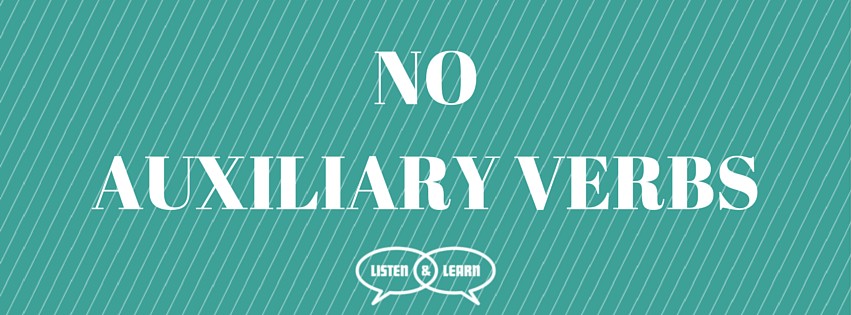The Easiest Things About Learning Swedish
Swedish is listed amongst one of the easiest languages for English speakers to learn, as it’s one of the few that are deemed closely related to English. If you think about that, it makes sense since English is a Germanic language with a Romanic influence, as is Swedish. Essentially, Swedish is English’s cousin so you should feel right at home.
And if you want to go to somewhere as beautiful as here…
 Photo via Pixabay / Pixabay
Photo via Pixabay / Pixabay
…then you should pick up a little language, no?
To give you some encouragement, we have listed some of the easiest things about learning Swedish. Lycka till! (good luck)
 There are around nine million native speakers of Swedish both throughout Sweden (naturally) and parts of Finland, so you’ll have plenty of people to practice with. There is also the excellent SFI (Swedish For Immigrants), a programme providing full immersion in Swedish language and culture for any non-native registered within Stockholm.
There are around nine million native speakers of Swedish both throughout Sweden (naturally) and parts of Finland, so you’ll have plenty of people to practice with. There is also the excellent SFI (Swedish For Immigrants), a programme providing full immersion in Swedish language and culture for any non-native registered within Stockholm.
 English and Swedish share a vast amount of cognates (words that both sound the same and have similar meanings. Due to this, a lot of Swedish words are easy to understand early in your studies, which can be a bonus if you’re an ‘instant results with studying’ kind of person. Not only that, but as there are only around 40,000 Swedish words in common use, with 1,500 of these being cognates, you’re well on your way to being fluent even before you start. Examples of this are: mus (mouse) and kung (king) – and that’s just for starters.
English and Swedish share a vast amount of cognates (words that both sound the same and have similar meanings. Due to this, a lot of Swedish words are easy to understand early in your studies, which can be a bonus if you’re an ‘instant results with studying’ kind of person. Not only that, but as there are only around 40,000 Swedish words in common use, with 1,500 of these being cognates, you’re well on your way to being fluent even before you start. Examples of this are: mus (mouse) and kung (king) – and that’s just for starters.
 Verb formation patterns are the same in Swedish as they are in English. For example the future tense uses komme att + infinitive which is like our ‘will’ for future use, or ska + infinitive (going to). To give you some examples you can use komme to say ‘Det kommer att regna hela nästa vecka, (it will rain next week), and ska to say ‘Jag ska åka till London på lördag’ (I’m going to London on Saturday).
Verb formation patterns are the same in Swedish as they are in English. For example the future tense uses komme att + infinitive which is like our ‘will’ for future use, or ska + infinitive (going to). To give you some examples you can use komme to say ‘Det kommer att regna hela nästa vecka, (it will rain next week), and ska to say ‘Jag ska åka till London på lördag’ (I’m going to London on Saturday).
 Verb forms do not vary depending on the subject, which is a beautiful thing – think of our I am, you are, She is etc. In Swedish, they stay the same, no matter what. If you have learned any other languages, you know how frustrating it is when these constantly change (ahem. English, for example…). Take comfort. The verb ‘to be’ is är no matter what. Rejoice!
Verb forms do not vary depending on the subject, which is a beautiful thing – think of our I am, you are, She is etc. In Swedish, they stay the same, no matter what. If you have learned any other languages, you know how frustrating it is when these constantly change (ahem. English, for example…). Take comfort. The verb ‘to be’ is är no matter what. Rejoice!
 Auxiliary verbs are other verbs’ little helpers. They form questions, alter the tense or mood of a sentence, and can even change the voice. So yes, helpful. But without them, Swedish is already massively simplified. Questions formed without auxiliary verbs is one of the most beautiful things about learning Swedish. All you need to do is flip the sentence order. For example: han skriver – he writes, becomes does he write – skriver han? How easy is that?!
Auxiliary verbs are other verbs’ little helpers. They form questions, alter the tense or mood of a sentence, and can even change the voice. So yes, helpful. But without them, Swedish is already massively simplified. Questions formed without auxiliary verbs is one of the most beautiful things about learning Swedish. All you need to do is flip the sentence order. For example: han skriver – he writes, becomes does he write – skriver han? How easy is that?!
Don’t these sound like incentive enough to start learning Swedish? Of course it does! But just in case you’re not yet convinced, we’ve added one more photo to tempt you. Now you really want to visit, don’t you? Sweden is a beautiful country with a beautiful language –familiarize yourself with both! Start by checking out our survival phrases in anticipation of your trip abroad then contact us to find out more about our Swedish courses.


